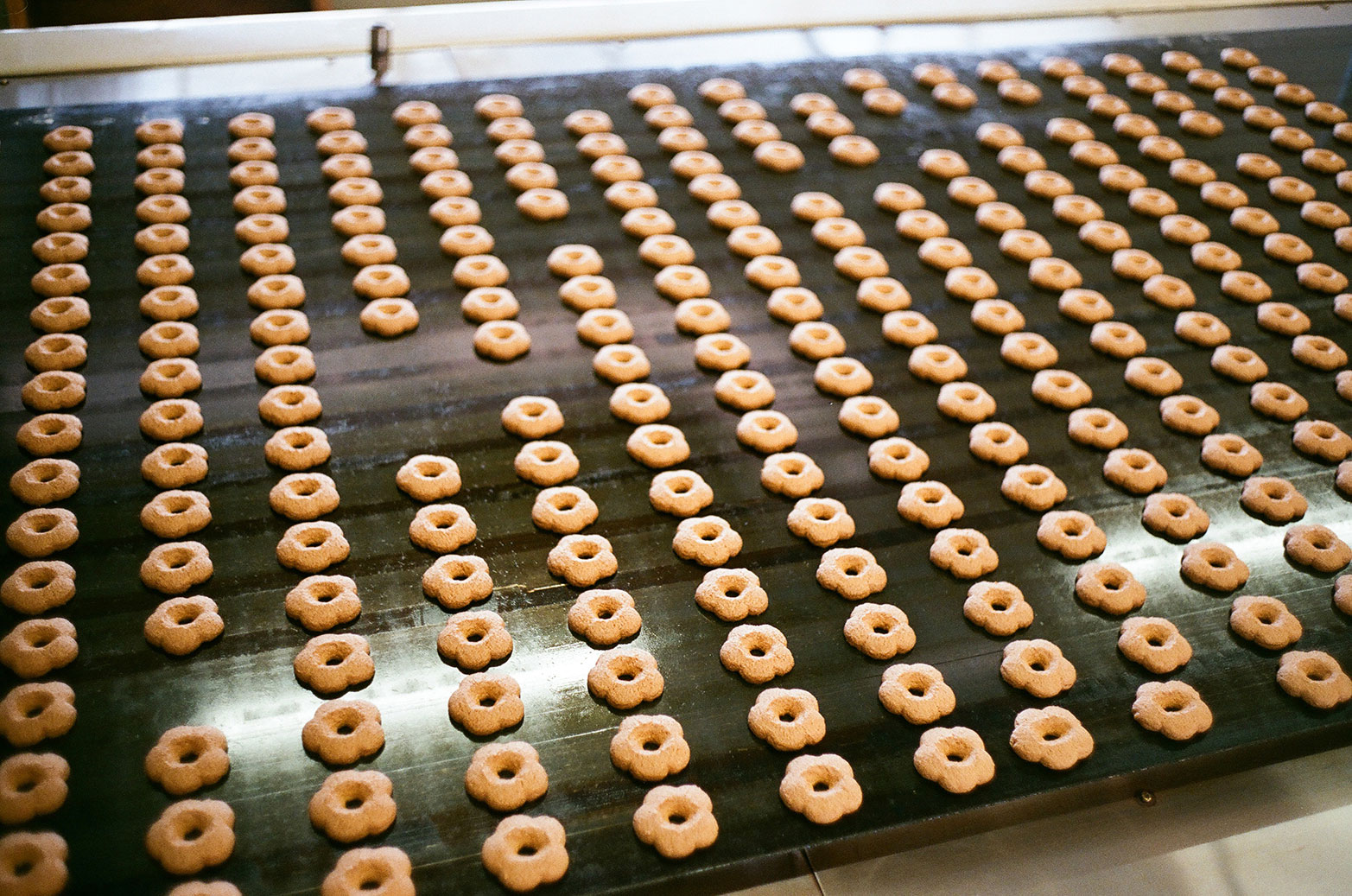
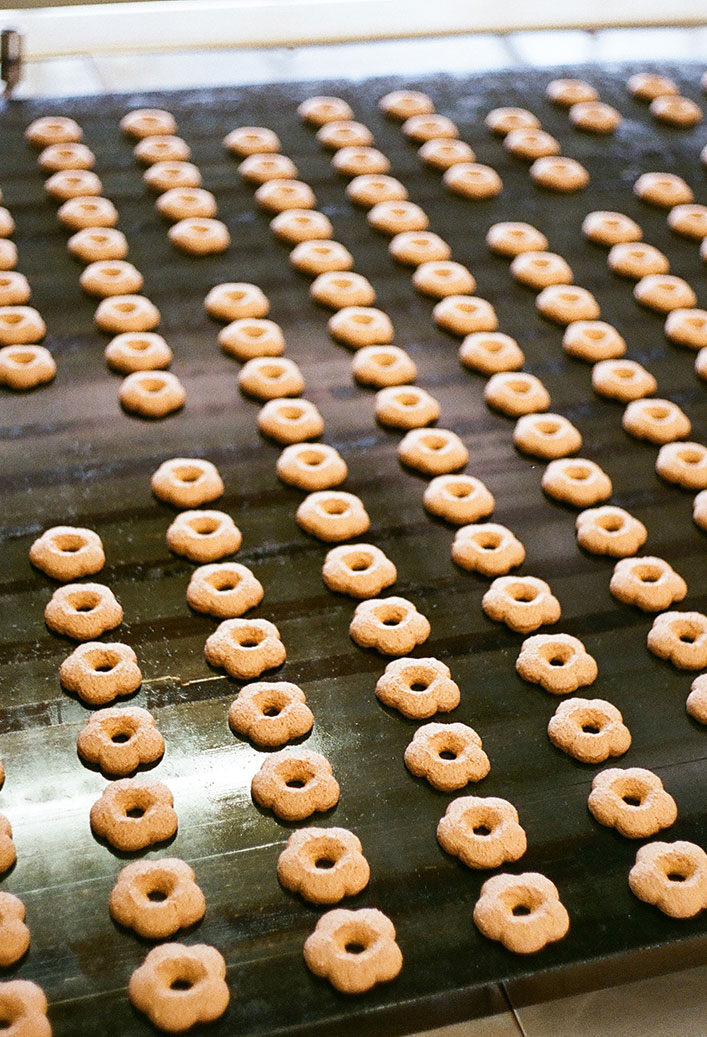
EYEVAN × KYOTO
interview 16
“To not change, we change.”
Mr. Yasuhiro Ueda, the 17th generation of Kawamichiya (est. Mid-Edo period / Nakagyo-ku, Kyoto City)
“Soba Houru” is a popular Japanese confectionary, which is made by buckwheat flour. The motif is plum blossoms and buds. Since its establishment in the Edo-period, they have been making this confectionary, using the same ingredients. Kawamichiya has been keeping its original taste. Now, Kawamichiya is about to take on a new challenge. We interviewed Mr. Ueda, the 17th generation of Kawamichiya.
About “Soba Houru”
Used to serve soba noodles while running a rice cracker shop
Founded in the mid-Edo period, Kawamichiya served soba noodles while operating a rice cracker shop. Soba noodles seemed to be more of a snack than a lunch. The ingredients are the same as now, buckwheat flour, wheat flour, eggs, sugar, and baking soda for puffing. The idea was probably to add buckwheat flour because it was available at the place where sweets were being made. Soba Houru is originally based on a process that came from Portugal and Holland, so it is like castella sponge cake or kompeito. It is more of a Namban confectionery than a Japanese wagashi. It all started with the idea of adapting cookies and putting buckwheat flour in it. The name has a trace of this, as the word “houru” is derived from the Dutch word Pole, meaning a round baked pastry, and the Portuguese word Bole.
Founded in the mid-Edo period, Kawamichiya served soba noodles while operating a rice cracker shop. Soba noodles seemed to be more of a snack than a lunch. The ingredients are the same as now, buckwheat flour, wheat flour, eggs, sugar, and baking soda for puffing. The idea was probably to add buckwheat flour because it was available at the place where sweets were being made. Soba Houru is originally based on a process that came from Portugal and Holland, so it is like castella sponge cake or kompeito. It is more of a Namban confectionery than a Japanese wagashi. It all started with the idea of adapting cookies and putting buckwheat flour in it. The name has a trace of this, as the word “houru” is derived from the Dutch word Pole, meaning a round baked pastry, and the Portuguese word Bole.
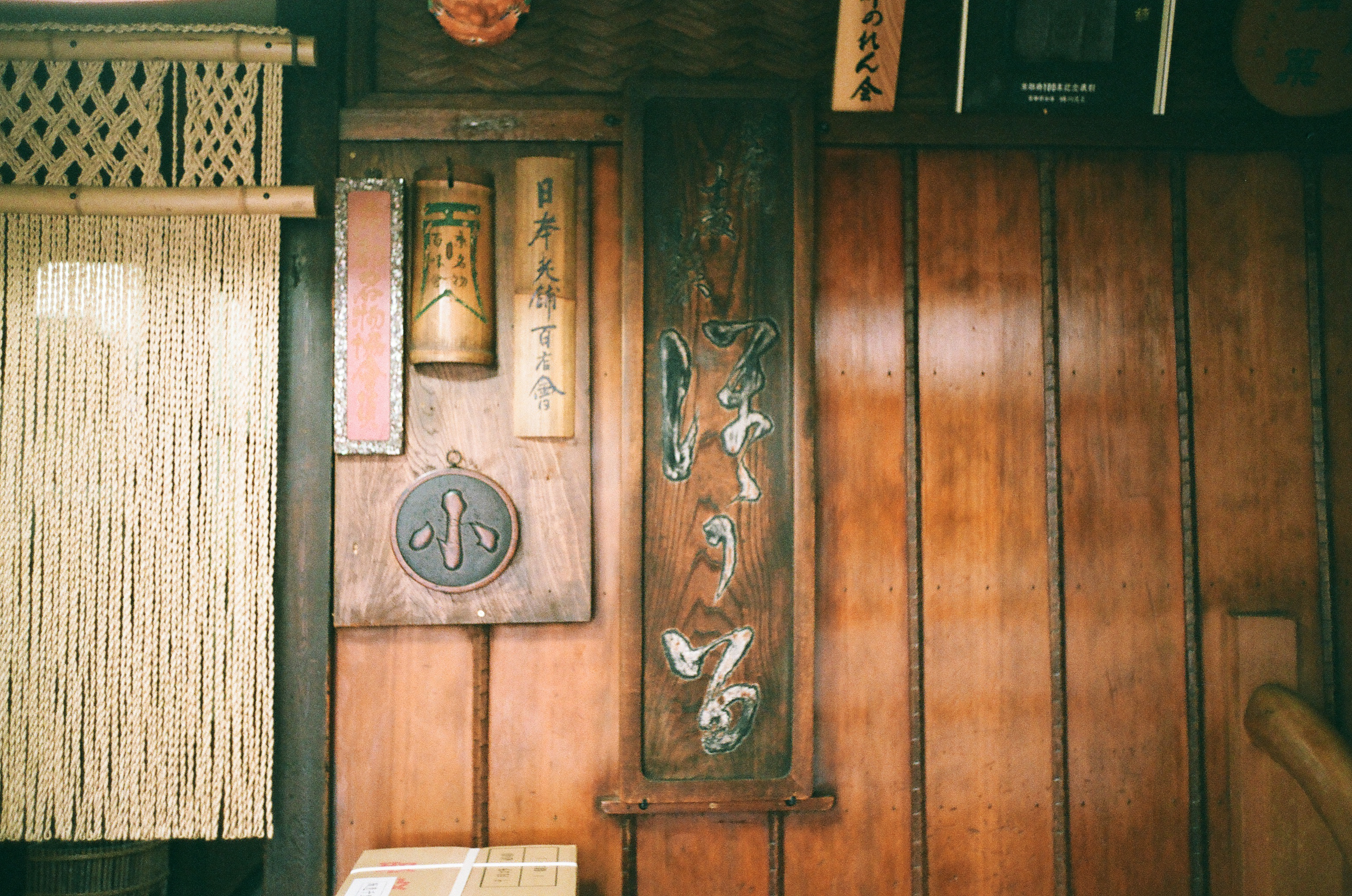
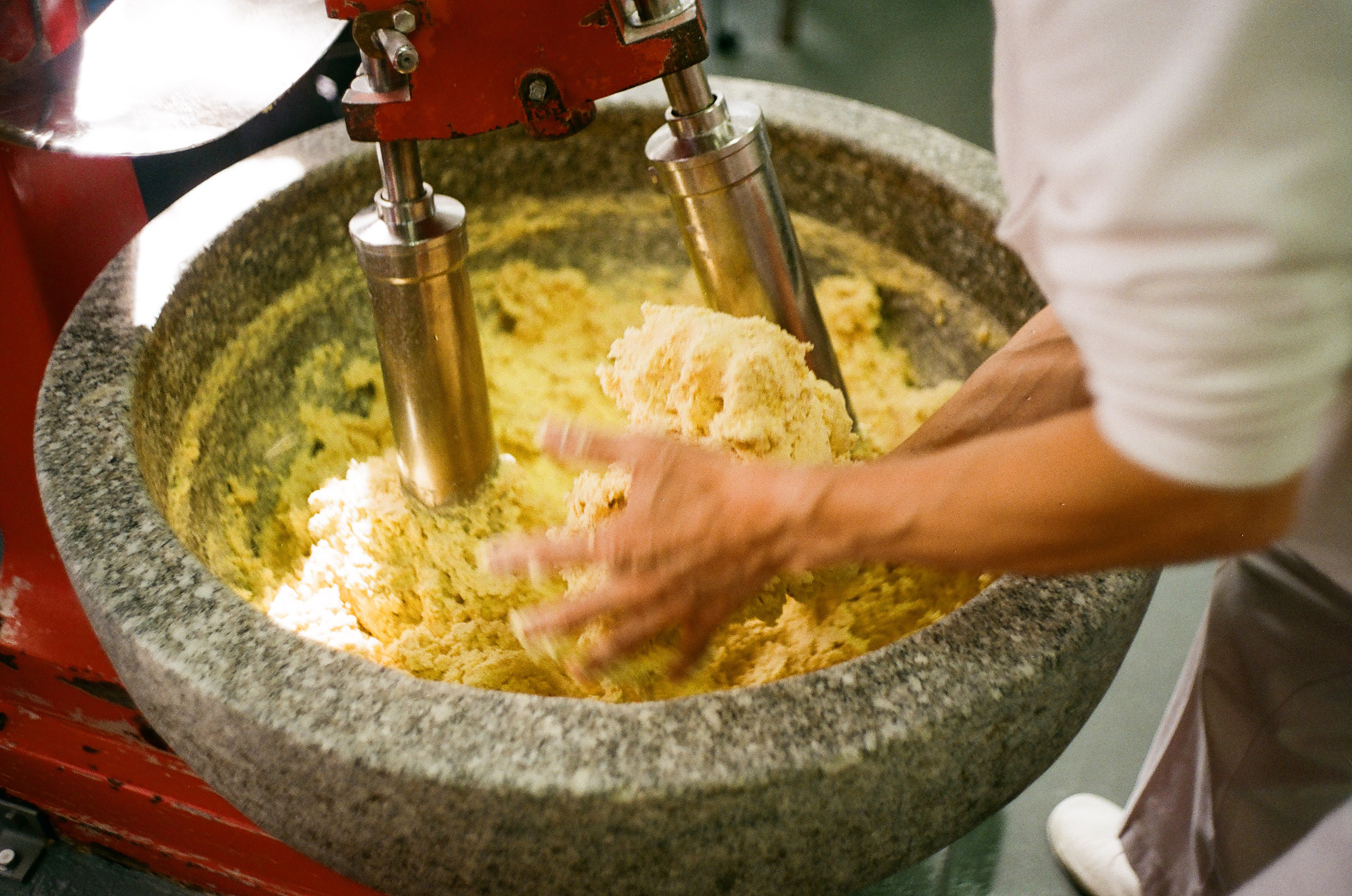
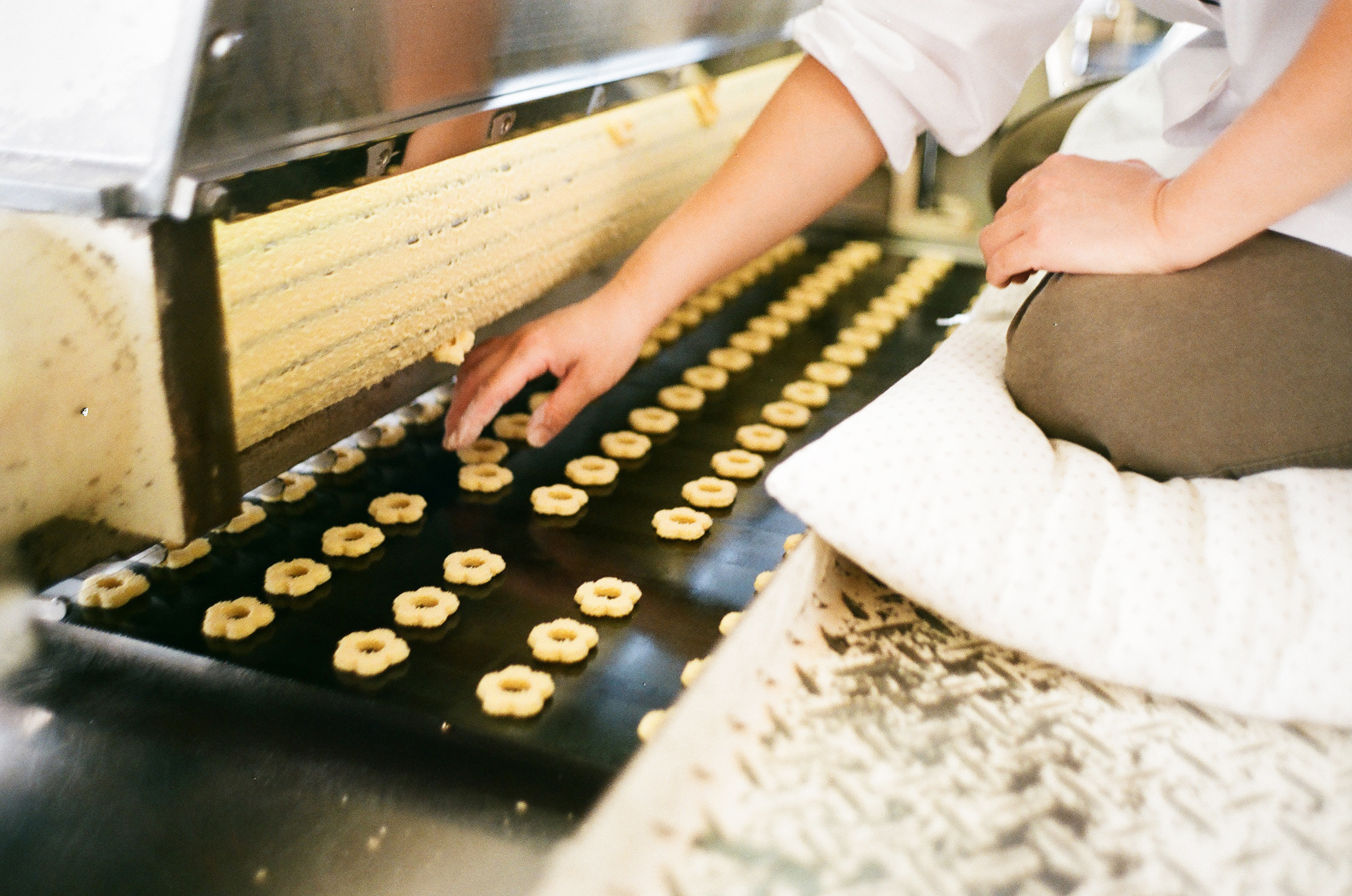
About Succession
Do what I have to do now
I have grown up here all my life. I didn’t have a particular desire to take over the business, but I did want to continue what my predecessors had protected. After graduating from university, I worked in a different company for a year, then I returned and worked in manufacturing for about 10 years. I thought it would be better to learn manufacturing process. In the meantime, I was figuring out about what I had to do. I don’t feel like I am passing it on to future generations yet. My father used to say, ” Kyoto people always appreciate us, so I do this as a way of returning the favor.”
Our values
Don’t get too caught up in stereotypes
I don’t really like the idea of “Soba Houru should be in this shape”. Soba houru comes in “flower” and “bud” shapes, and the “flower” is hollowed out in the middle so that heat can reach the inside.
I understand that those shapes have been adopted for generations for manufacturing reasons, but Kyoto offers a variety of seasonal specialties, so I would like to propose other shapes, too.
I understand that those shapes have been adopted for generations for manufacturing reasons, but Kyoto offers a variety of seasonal specialties, so I would like to propose other shapes, too.
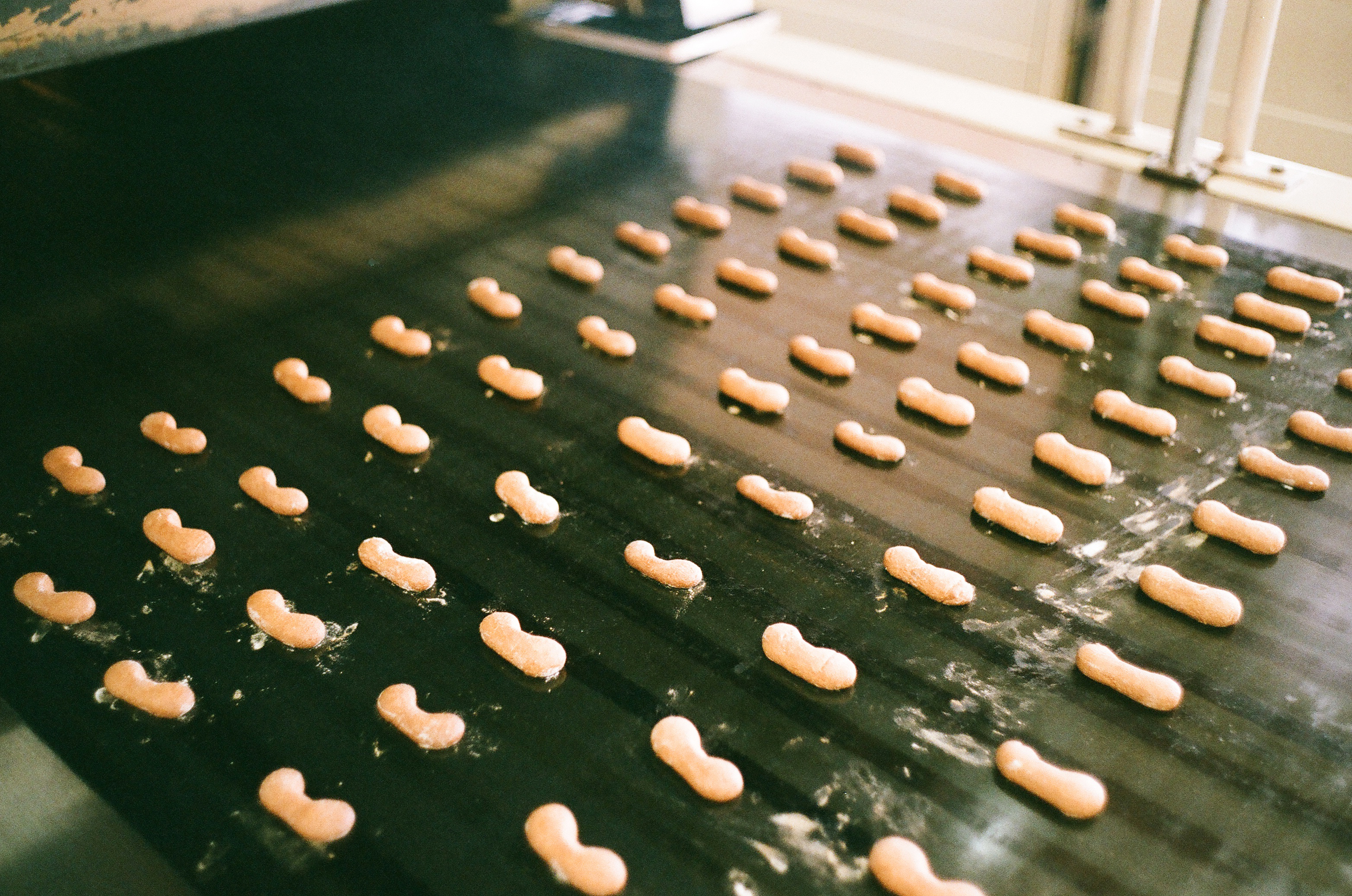
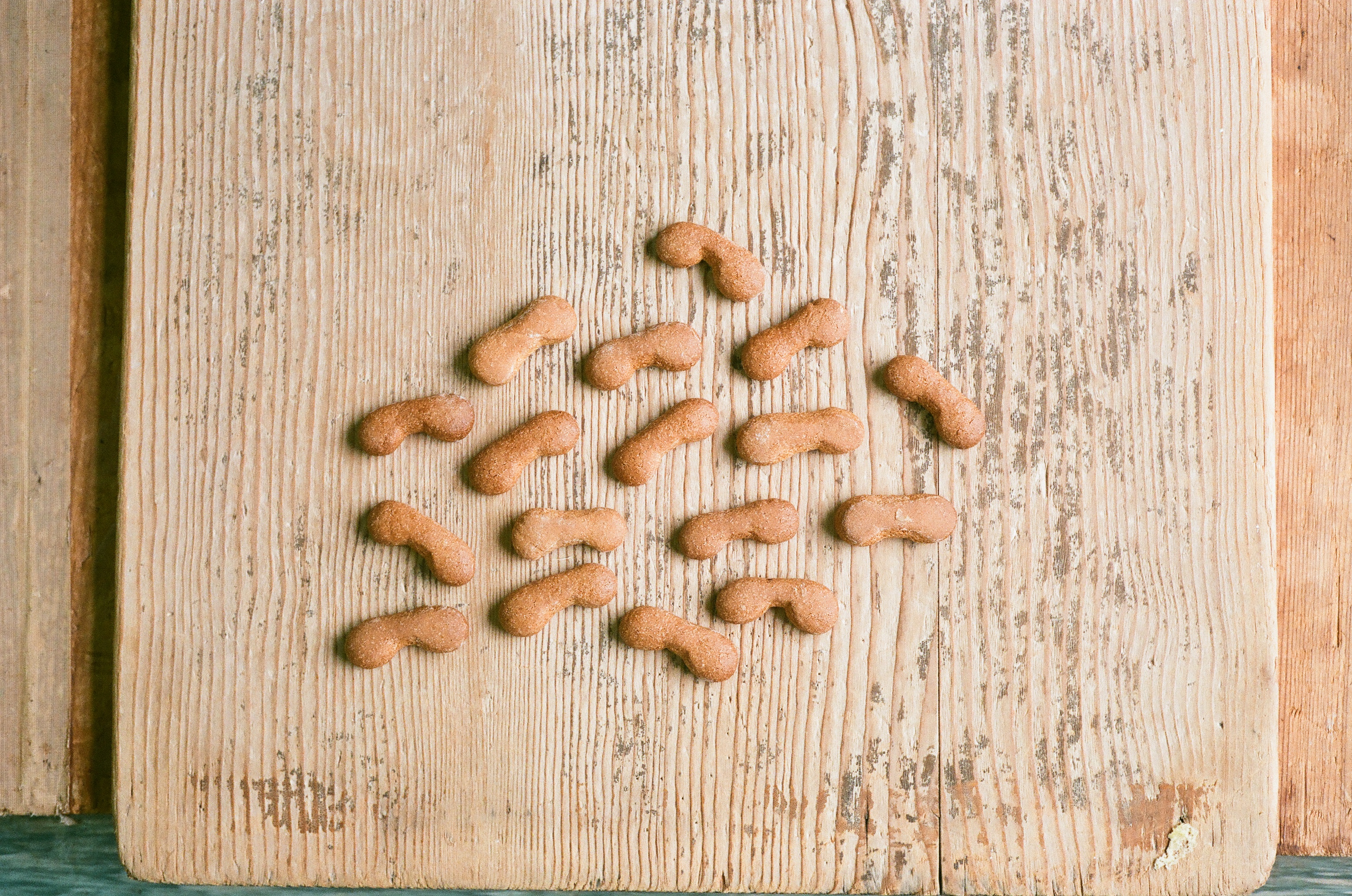
Meaning of tradition
I don’t know if the tradition remains
Rather than protecting traditions, I think about how to pass the traditions. I honestly don’t know if the tradition remains because we offer a taste, and people’s taste are changing by time. The ingredients, wheat, sugar, and eggs are not the same, everything must be different. So, I am not sure if they taste the same as the old days. I am not confident that the taste is the same as it has been for 300 years. That is why we aim to have older customers and regular customers say, ” The taste hasn’t changed!”